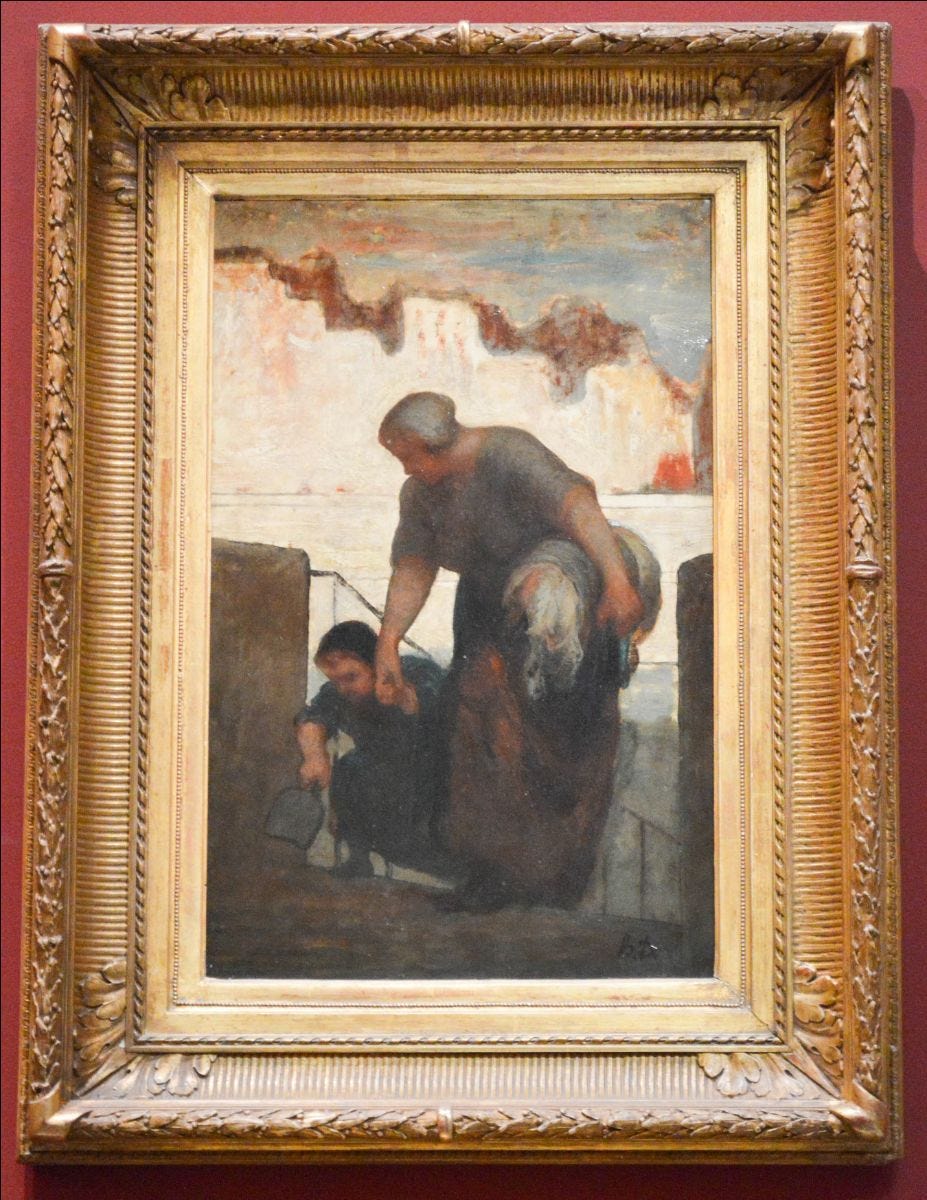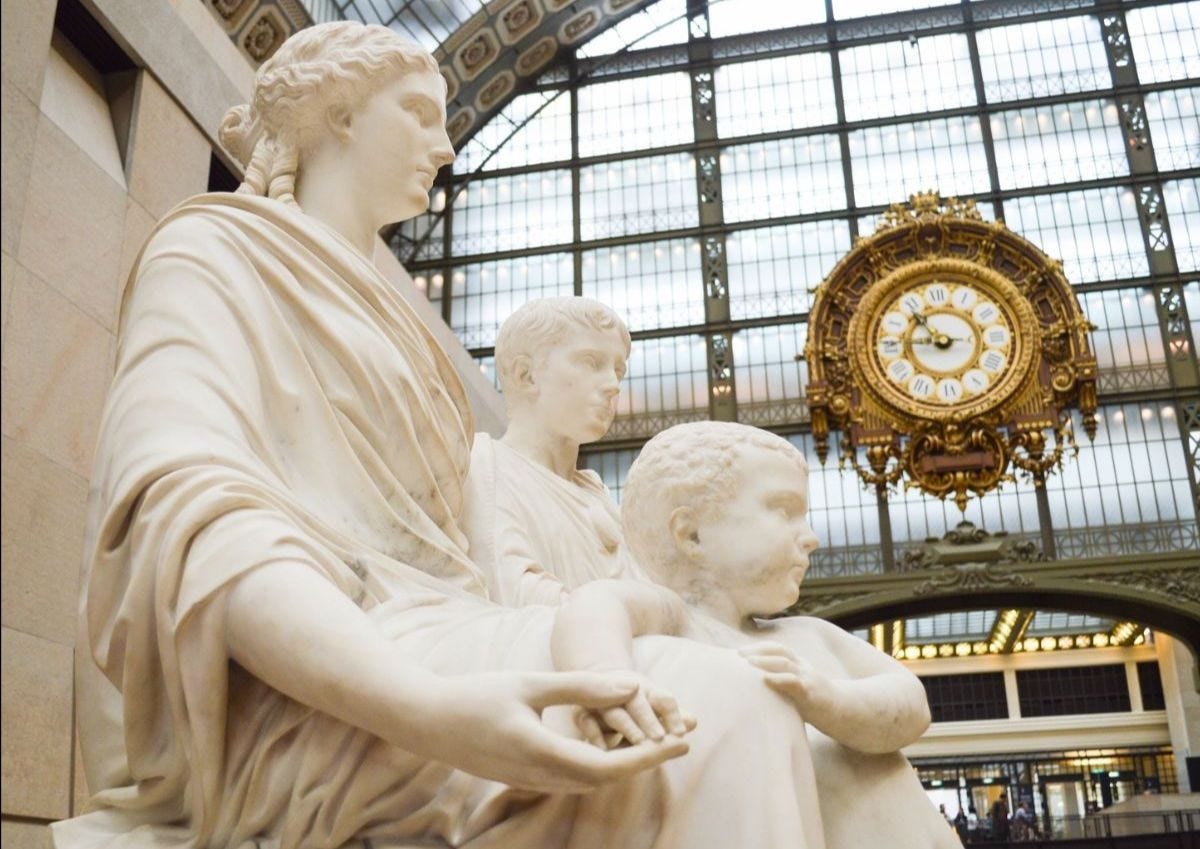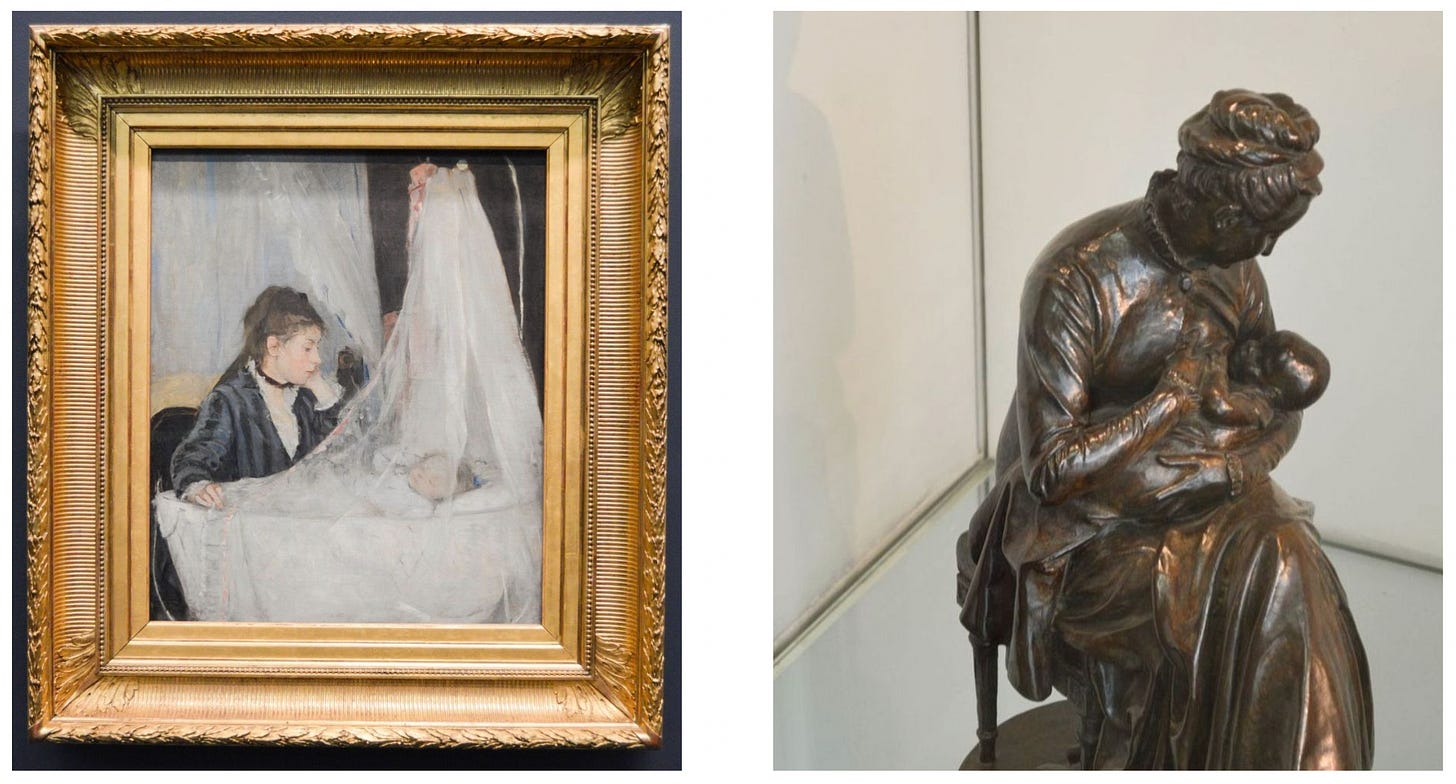Artful Advent 4: Framing Acts of Love
Put a symbolic frame around the care work you do: this is what love looks like
This four-week series explores how parents of little children can nourish themselves in a busy season by looking at their lives like art.
Hello friend,
Welcome to the last week of Advent. As we head toward Christmas, we are invited to reflect on love.
In All About Love, bell hooks (who passed away this week) writes about finding a shared definition of love: “The word ‘love’ is most often defined as a noun, yet all the more astute theorists of love acknowledge that we would all love better if we used it as a verb.”
Love is a verb.
Our love manifests itself in actions that “openly and honestly express care, affection, responsibility, respect, commitment, and trust” (bell hooks). This week, we'll explore what that looks like.
When I lived in Paris, I used to go on museum photo safaris, an activity I made up to help me see art in new ways. I’d take my camera to a museum and look for details in artworks around different themes, like hands in the Louvre or the color red in the Centre Pompidou.
One Sunday afternoon in May, I went to the Musée d’Orsay in search of moms.
I didn’t have to look far. Representations of mothers were all around me: from symbolic figures of Motherhood to tender depictions of a mother and child sharing a quiet moment.
In a small room off the Orsay’s iconic main sculpture gallery, I came face to face with Honoré Daumier’s painting, La Blanchisseuse (The Laundress). A woman helps her child up steep stone steps. She had been doing her wash below in a laundry boat moored along the Seine, all while managing her small child. Intense manual labor mixed with, I imagine, a vigilant eye to keep that child safe and out of the way of the fellow laundresses.

The painting is actually quite small, bigger than a piece of printer paper but not by much. And that smallness speaks to how it can feel to go through a day of balancing work with childcare; the world can feel compact and unglamorous. This little painting hangs on a wall not far from galleries filled with enormous paintings of decadent scenes brimming with neoclassical glory.
But look how Daumier framed this painting. In this quiet, modest scene, look at the monumentality of this mother against that bright background. We see the curve of her working body and the tenderness of her hand holding her child. Her world may feel small, but we as the viewers can see that to her child, she is the whole world.
We see vitality, timelessness, love. How the little moments in caring for a child add up to something really important. And all this is communicated through a single moment framed by the artist.
This week, I invite you to put a symbolic frame around the care work you do—take a moment and think: This is what love looks like.
As you wipe jam off those soft cheeks, repair a broken Duplo tower, change a diaper, scrub the kitchen counters, read the same book five times in a row at bedtime—collect these images in your heart as the physical manifestation of your love. It shouldn’t take long before you could fill a whole museum.
This is a very powerful practice. The hundreds of actions that make up our days undergo a subtle alchemy. We're not just grocery shopping or driving to daycare or folding laundry or doing a dinosaur puzzle. We are putting tangible form to the intangible force of love.
And we are reminded that our efforts matter, that we are cultivating something beautiful and important, even when that value is not recognized financially or societally.
The time is not wasted, it is consecrated.
And what a relief. I have found it so comforting to look at my life through this lens—to see all my care work as the practice of love-as-a-verb.
This reframing work is so important if we want to be intentional with the stories we tell ourselves.
Honestly, I’ve been telling myself that if I just worked smarter, and pushed harder, I wouldn’t be so tired all the time and we’d be eating more fresh vegetables with dinner and I would be able to finish my PhD dissertation proposal between unpacking moving boxes, making new friends, and caring for my toddler during daycare closures. I tell myself that these are the things that matter, and my inability to force my way into grinding productivity is a moral failure.
But when I put a figurative frame over my care work, I see that my days are composed of so much love. My to-do list might be gathering dust, but I turn my love into action over and over and over, every single day. And now I’m doing myself the kindness of telling that truer, more interesting story.
There is so much power in reclaiming our narratives.
We get to decide how we frame our lives.
Thank you for welcoming me into your inbox over the past four weeks. It’s been such a joy to explore these ideas with you, and I’ve been inspired by the stories you’ve shared with me about putting these practices into action.
I hope you feel encouraged to look at your life like art, knowing that there is always beauty ready to meet you.
May you put a gilded frame over the acts of care you perform every day—big and small, recognized and unseen—knowing that they are love in action. May you feel empowered to look at your life through the lens of love.
Wishing you a love-soaked holiday,








